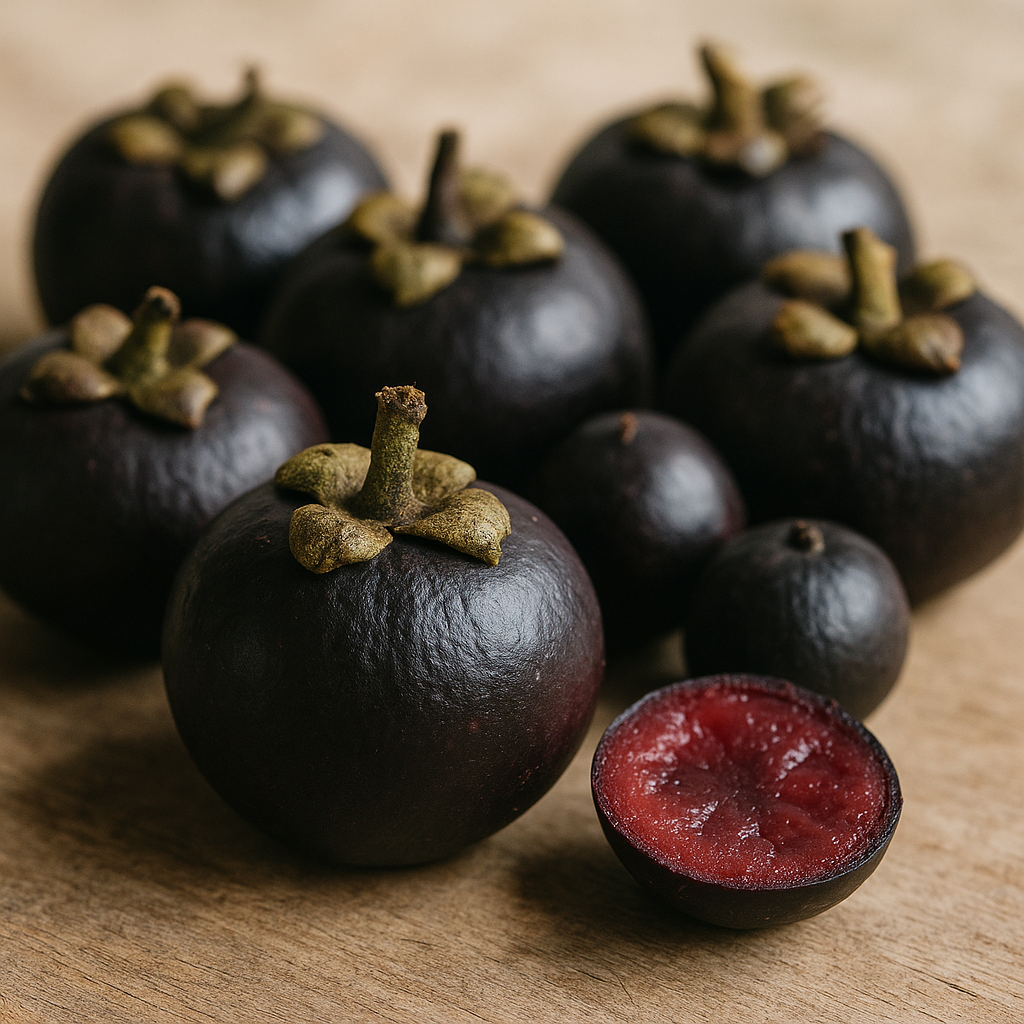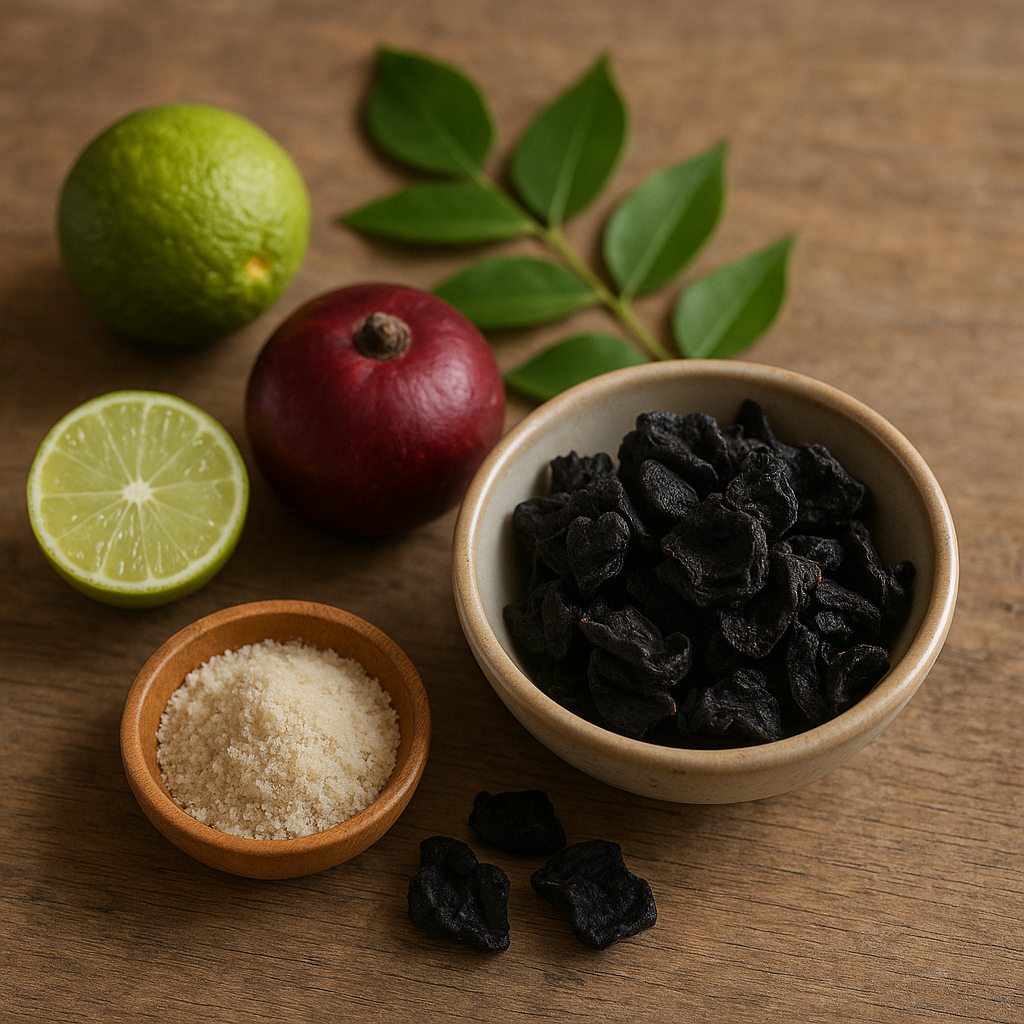Ask Ayurvedic doctor a question and get a consultation online on the problem of your concern in a free or paid mode. More than 2,000 experienced doctors work and wait for your questions on our site and help users to solve their health problems every day.
Shop Now in Our Store
What Is Kokum: Ayurvedic Uses, Health Benefits, and Precautions

If you’ve ever wandered through a spice bazaar in India or browsed the ingredient list on a bottle of some exotic summer drink, you might’ve stumbled across something called kokum. But what is kokum, exactly? Why has it become such a hot topic in Ayurvedic circles and wellness blogs alike?
Kokum fruit is a small, deep purple wonder native to India, and it’s making waves—not just for its unique kokum taste (tangy, slightly sour, and a little sweet), but also for its many supposed health perks. From refreshing kokum juice to its potent kokum oil, this plant's parts are used in countless traditional remedies. This article dives into the benefits of kokum juice, how dried kokum is traditionally used, kokum syrup recipes, and even the not-so-well-known kokum side effects. Let’s explore how this unassuming fruit became an Ayurvedic all-star.
What Is Kokum: Fruit, Taste, and Botanical Description
Kokum, scientifically known as Garcinia indica, is a tropical fruit that grows in parts of the Western Ghats, mainly in Maharashtra, Goa, Kerala, and Karnataka. The kokum fruit is small and round, about the size of a plum, with a deep reddish-purple skin when ripe. Inside, the pulp is juicy and tart—think of it as the Indian cousin of tamarind, but a bit more intense and with a personality of its own.
Kokum Tree and Natural Habitat
The kokum tree is an evergreen beauty. It thrives best in warm, coastal areas with good rainfall, which is why it’s so at home in India's Konkan region. This tree can grow up to 18 meters tall (though honestly, most don’t get that huge) and it starts bearing fruit in about 7–8 years. That may sound like a long wait, but trust me, it’s worth it.
The tree's bark is grayish, and its leaves are shiny green, but the real show-stealer is the fruit. Each tree can produce hundreds of kokum fruits in a season, and they’re usually harvested between April and June—peak kokum time!
Dried Kokum and Its Traditional Use
Once the fruits are harvested, they’re sliced, the seeds removed, and then sun-dried. This dried kokum is what you’ll most often find in local markets or spice stores. It looks a bit like shriveled petals and carries a deeply sour, almost smoky flavor.
In Indian cooking, especially in the western coastal states, dried kokum is a staple. It’s used to sour curries, dals, and fish stews. Unlike lemon or vinegar, kokum adds a richer, more complex tang. And the best part? It’s cooling by nature, which is exactly why it's often used in hot climates to balance body heat.
Ayurveda swears by it. According to traditional wisdom, dried kokum helps reduce “pitta dosha” (the fire element), making it perfect for calming the system in summer. Oh and pro tip—don’t overdo it. Just a couple of petals steeped in water or broth is usually enough.

Ayurvedic Properties and Cooling Nature of Kokum
In Ayurveda, kokum is considered a “coolant,” which basically means it's used to balance the body’s internal heat—especially during sweltering summers. But it’s not just about cooling you down. Kokum also has anti-inflammatory, antioxidant, and digestive qualities, making it a go-to ingredient in traditional Indian medicine.
It’s believed to help balance the pitta dosha, which governs metabolism and digestion. Too much pitta? You might feel irritated, over-heated, or suffer from skin rashes and acidity. That’s when kokum comes to the rescue.
Some texts even mention that kokum helps boost appetite, relieve flatulence, and support liver health. It’s gentle, doesn’t mess with your gut flora, and unlike some herbal treatments, you don’t need to choke it down with your nose pinched. It actually tastes...good.

Kokum Juice and Syrup: Benefits and Usage
One of the most popular—and refreshing—ways to enjoy kokum is as a drink. Kokum juice and kokum syrup have been traditional thirst-quenchers for centuries, long before energy drinks and electrolyte powders showed up on the scene.
Benefits of Kokum Juice for Digestion
If you've ever felt bloated, heavy, or just plain off after a meal, a glass of kokum juice might just be your new best friend. The benefits of kokum juice go beyond just flavor. Thanks to its natural antioxidants like hydroxycitric acid (HCA), kokum helps regulate appetite and improves digestion. Some people even use it as a mild detox drink.
Also—little known fact—it’s mildly anti-parasitic. That means kokum juice can help maintain gut health and fend off some unwanted visitors in your system. Gross? Yes. Useful? Absolutely.
It’s especially great when served chilled, with a pinch of cumin or black salt. Add mint, and you've got a legit cooling digestive tonic that could rival any fancy spa menu.
How to Make and Use Kokum Syrup
Kokum syrup is made by soaking dried kokum in water, then boiling it with sugar (or jaggery, for a healthier take) until it thickens into a tangy, dark red concentrate. A dash of cardamom or ginger can add extra zing. It’s shelf-stable and super easy to make at home.
Mix a tablespoon of the syrup into a glass of water for instant kokum juice. Add ice, maybe a mint leaf or two—and boom, you've got yourself a traditional Indian summer drink that’s as good for your stomach as it is for your taste buds.
You can also splash it into mocktails, drizzle it over shaved ice, or mix it into salad dressings for a little edge. Some even experiment with it in cocktails—imagine kokum mojitos or a kokum margarita (don’t knock it 'til you’ve tried it!).
Other Forms of Kokum: Kokum Oil and Extracts
Kokum oil—also known as kokum butter—is another treasure extracted from the fruit’s seeds. It’s solid at room temperature, similar to shea or cocoa butter, and used primarily in cosmetics and skincare.
This butter is rich in essential fatty acids and has healing properties that can soothe dry, cracked skin. It’s non-greasy and absorbs quickly, which makes it a fave in DIY lotion bars and balms. It’s even been used in lipsticks and body butters. Honestly, kokum oil deserves a spotlight of its own!
You can also find kokum fruit extracts in herbal supplements, which are said to support weight management and heart health—but that’s a rabbit hole we’ll explore cautiously.

Kokum Side Effects and When to Avoid It
Alright, kokum may seem like a miracle fruit—and in many ways, it is—but let’s not get carried away. Like most things, moderation is key. Even water can be too much if you drink a gallon in one sitting, right?
Some people might experience kokum side effects such as digestive discomfort or acid reflux if they overdo it, especially if they’re sensitive to sour foods. Since kokum has a high concentration of hydroxycitric acid (HCA), it can interfere with certain medications, particularly those related to blood sugar or weight loss. If you're diabetic or on meds that affect your metabolism, check with your doctor first before making kokum juice a daily habit.
Also, pregnant and breastfeeding women should err on the side of caution. There’s not enough research yet to know exactly how kokum affects hormonal balances during these stages, so better safe than sorry.
And let’s not forget—kokum can stain! Seriously, it’ll turn your countertop purple if you’re not careful. That’s not a health issue, just a cleaning headache. But hey, that rich pigment is also a sign of the fruit’s powerful antioxidants.
Conclusion
So, what is kokum? It’s a lot of things. A tropical fruit, a digestive aid, a cooling summer drink, a skincare ingredient, and a humble yet powerful player in the world of Ayurvedic healing.
From the tangy zing of kokum juice to the soothing effects of kokum oil, this vibrant fruit packs more benefits than you might expect. Whether you’re sipping it in a sherbet on a hot day or stirring dried kokum into your favorite curry, you’re getting a dose of ancient wellness wrapped in incredible flavor.
The benefits of kokum juice are real—but so are the cautions. Enjoy it wisely. And maybe share a glass with a friend or two. They’ll thank you later.
Feeling curious? Try making a kokum syrup at home this week—or better yet, grab some dried kokum and experiment in the kitchen. It might just become your new secret ingredient.
FAQs
Q: What is kokum called in English?
A: There’s no exact English equivalent, but kokum is sometimes referred to as wild mangosteen or red mangosteen, thanks to its close botanical relation.
Q: What is kokum used for?
A: Kokum is used for its cooling and digestive properties, primarily in traditional Indian medicine and cuisine. You’ll find it in drinks, curries, chutneys, and even beauty products like creams and balms.
Q: What can I replace kokum with?
A: If you can’t find kokum, you can try tamarind or amchur (dried mango powder) as a souring agent in cooking. But keep in mind, the flavor profile of kokum is pretty unique—it’s tangy, slightly fruity, and less sharp than tamarind.
There you have it! A complete guide to one of India’s most underrated superfruits. From kokum fruit benefits to how to use kokum oil and syrup, we’ve covered it all. Now it’s your turn—try it, share it, or just drop this article in your foodie group chat.
Thirsty for more? 🍹 Bookmark this, and follow for more deep dives into nature’s finest.
This article is checked by the current qualified Dr Sujal Patil and can be considered a reliable source of information for users of the site.

